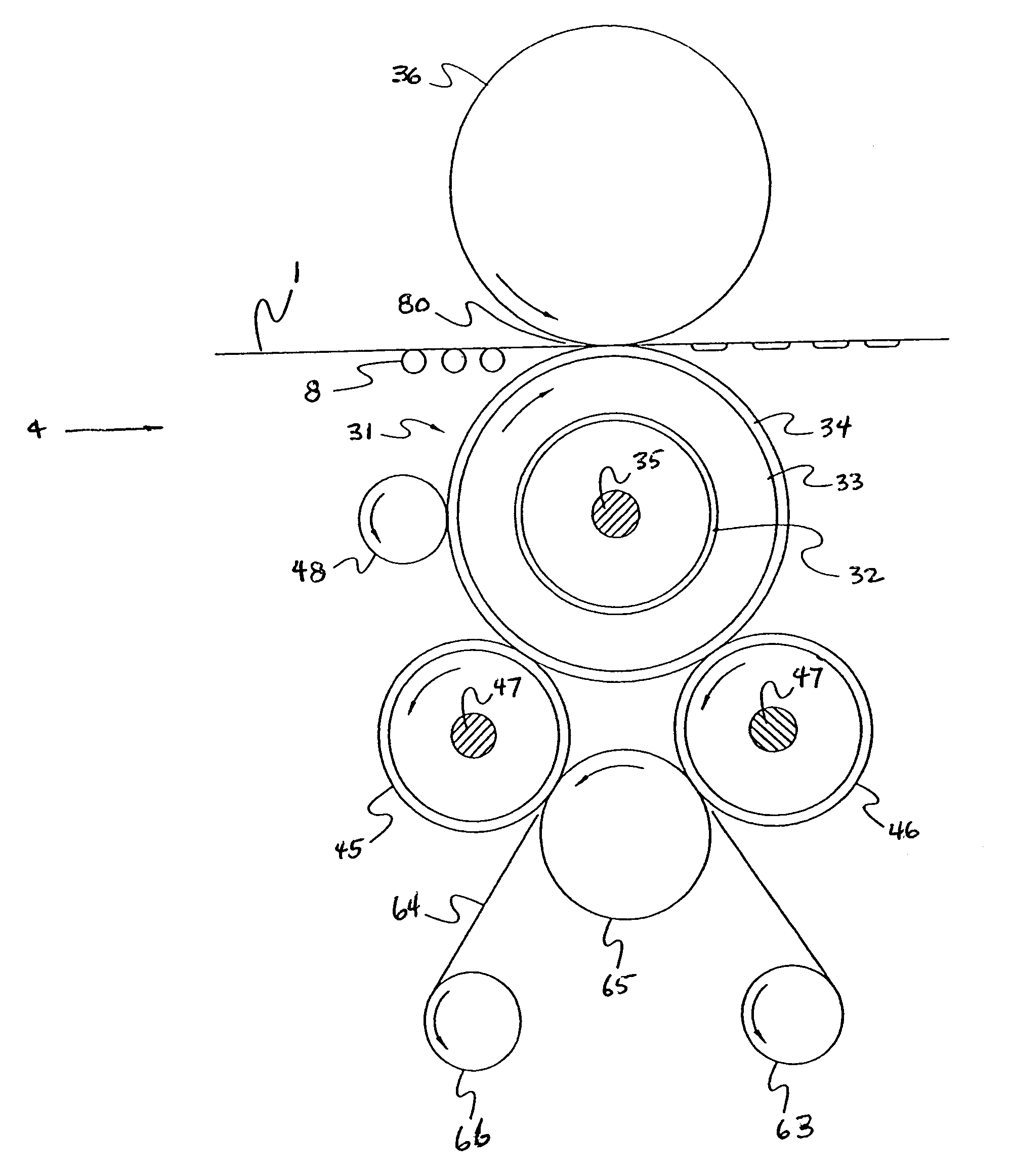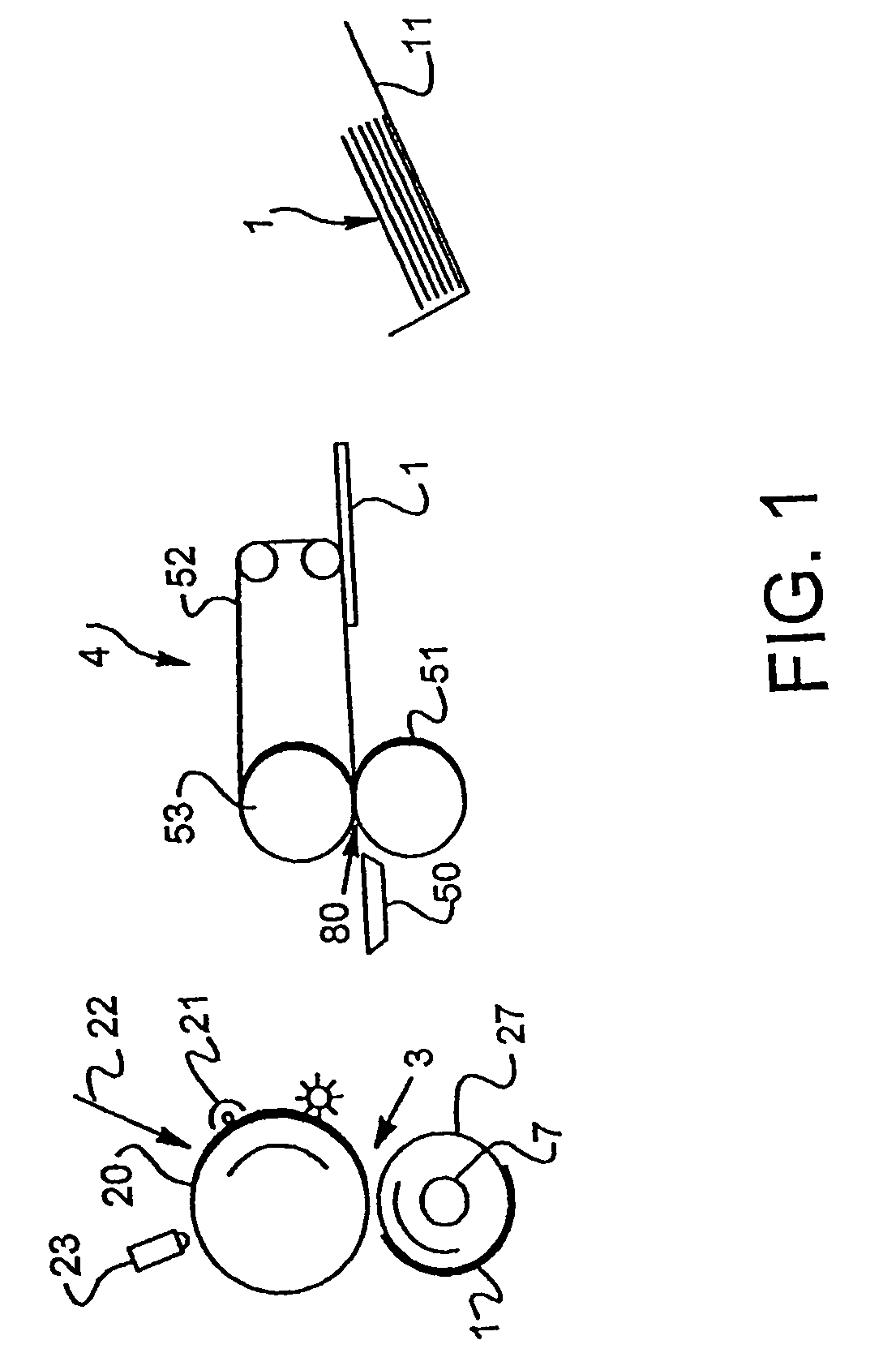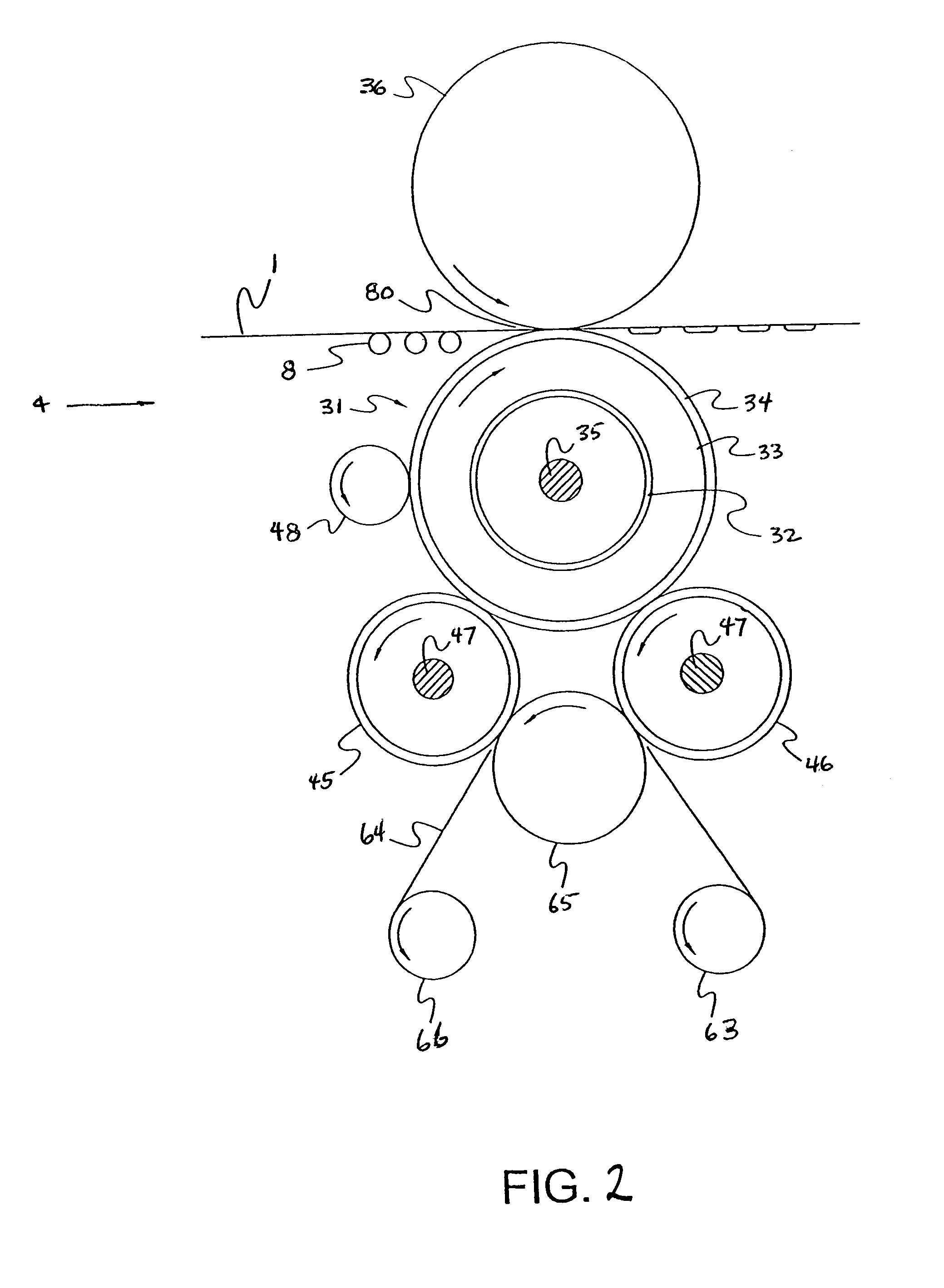Fuser member, apparatus and method for electrostatographic reproduction
a fuser and electrostatographic technology, applied in the field of electrostatographic imaging and recording apparatus, can solve the problems of increasing toner offset, interfering with the operation of the electrostatographic apparatus and the quality of the final product of the electrostatographic process, and increasing the contamination of the fuser member, so as to achieve good paper handling, good dimensional stability, and high viscosity
- Summary
- Abstract
- Description
- Claims
- Application Information
AI Technical Summary
Benefits of technology
Problems solved by technology
Method used
Image
Examples
example 1
[0176]Example 1 is prepared by substantially repeating the procedure of Comparative Example A, except as provided otherwise hereinafter. Initially, a mixture is formed by combining 78.9 parts of polydimethylsiloxane (LS4340-103) per 100 parts of the mixture obtained by Comparative Example A (the polydimethylsiloxane and AL602 alumina powder mixture) prior to adding Cat 50 catalyst. Cat 50 is then added at 0.45 parts per 100 parts of the mixture, and then the mixture is degassed, injection molded, and cured substantially as in Comparative Example A to obtain a slab. The slab is post cured, sampled, and tested substantially as described in Comparative Example A, with the data being given in Table I for comparison purposes. Relative to Comparative Example A, the resulting slab has a reduced amount of filler in terms of volume percent, with a corresponding reduction in durometer hardness.
example 2
[0177]Example 2 is prepared by substantially repeating the procedure of Example 1, except as provided otherwise hereinafter. Initially, a mixture is formed by combining 27.6 parts of polydimethylsiloxane (LS4340-103) per 100 parts of the mixture obtained by Comparative Example B (polydimethylsiloxane and AL601 alumina powder mixture) prior to adding Cat 50 catalyst. Cat 50 is then added at 0.36 parts per 100 parts of the mixture before degassing, injection molding, and curing the mixture substantially as described in Comparative Example A to obtain a slab. The slab is post cured, sampled, and tested substantially as described in Comparative Example A, with the data being given in Table I for comparison purposes. Relative to Comparative Example B, the resulting slab has a reduced amount of filler in terms of volume percent, with a corresponding reduction in durometer hardness.
example 3
[0178]The procedure of Comparative Example A is substantially repeated, except as provided otherwise hereinafter. A mixture is initially formed by combining 70 parts of polydimethylsiloxane (LS4340-103) per 100 parts of the mixture prepared in Comparative Example D (the polydimethylsiloxane and AL600 alumina powder) by hand mixing and compounding in the three roll mill. The mixture is combined with 0.25 parts of Catalyst 50 per 100 parts of mixture before degassing, then the resulting mixture is injection molded and cured substantially as described in Comparative Example A to obtain a slab. The slab is post cured, sampled, and tested substantially as described in Comparative Example A. The data for the slab prepared according to Example 3 is shown in Table I.
[0179]
TABLE IExamples 1–3 and Comparative Examples A–D - Slab Sample DataParticle Size (μm)Larger thanTotalAlumina95% of99% ofFiller1FillerDurometerMeanthethe95 weightWear RateContentContenthardness2Fillernumber ofnumber ofperce...
PUM
 Login to View More
Login to View More Abstract
Description
Claims
Application Information
 Login to View More
Login to View More - R&D
- Intellectual Property
- Life Sciences
- Materials
- Tech Scout
- Unparalleled Data Quality
- Higher Quality Content
- 60% Fewer Hallucinations
Browse by: Latest US Patents, China's latest patents, Technical Efficacy Thesaurus, Application Domain, Technology Topic, Popular Technical Reports.
© 2025 PatSnap. All rights reserved.Legal|Privacy policy|Modern Slavery Act Transparency Statement|Sitemap|About US| Contact US: help@patsnap.com



